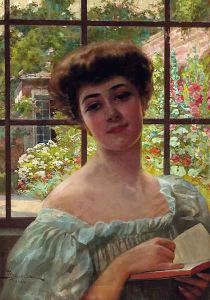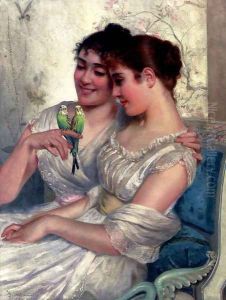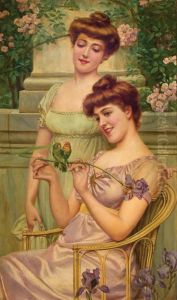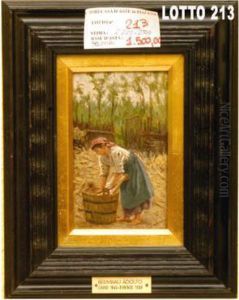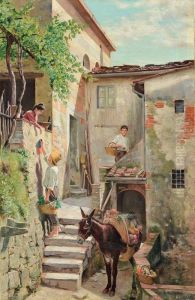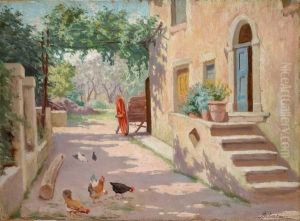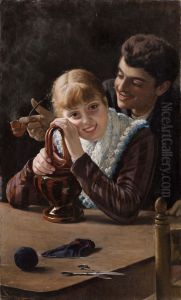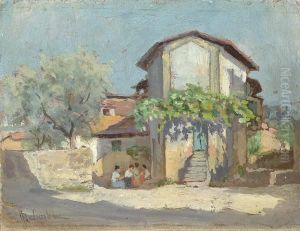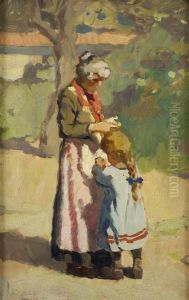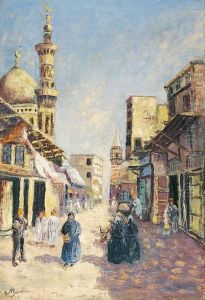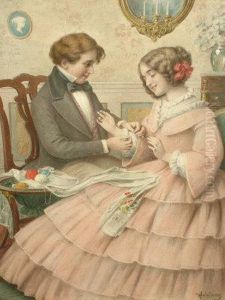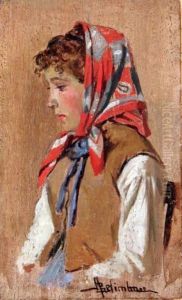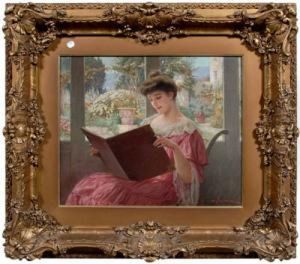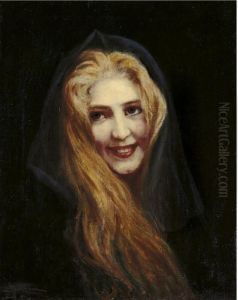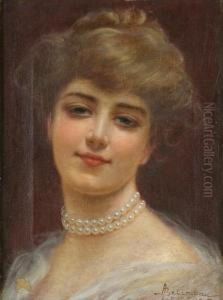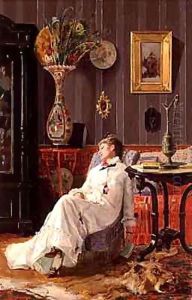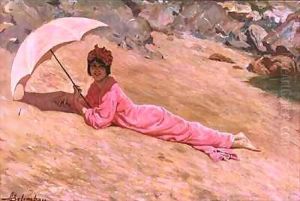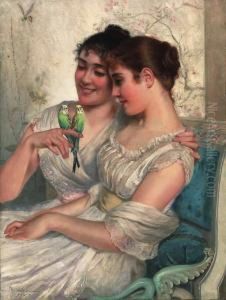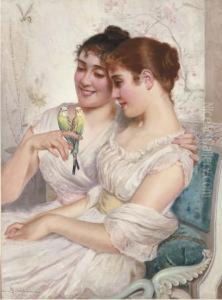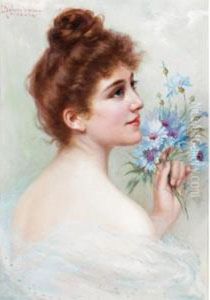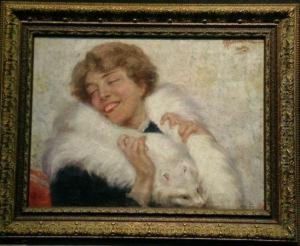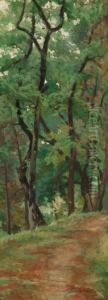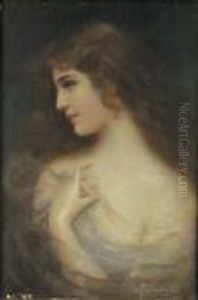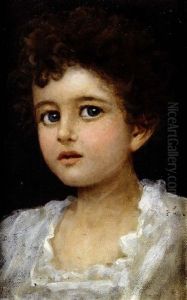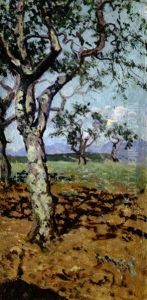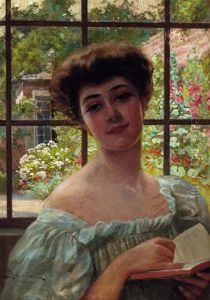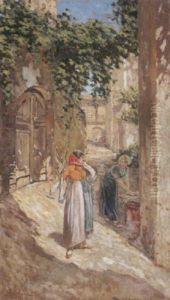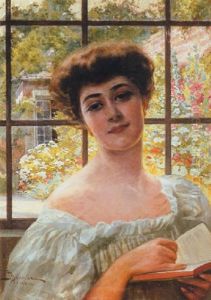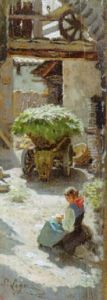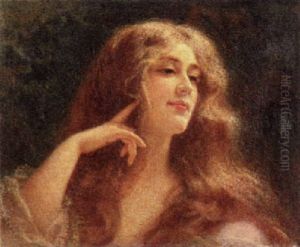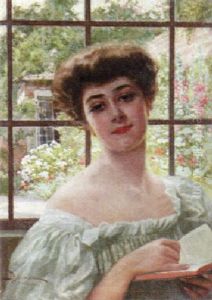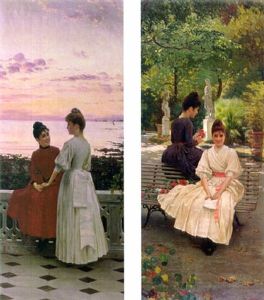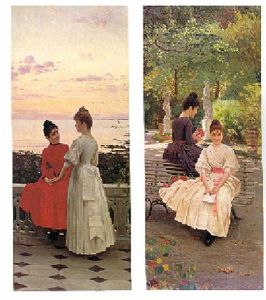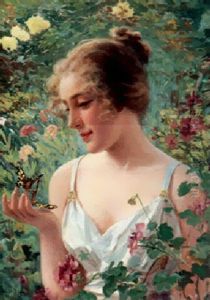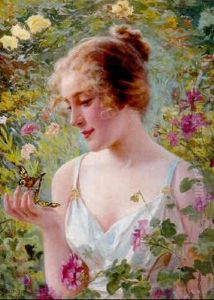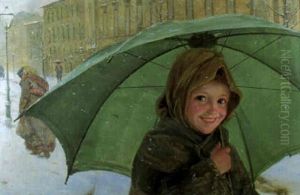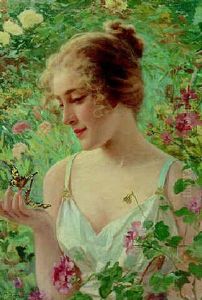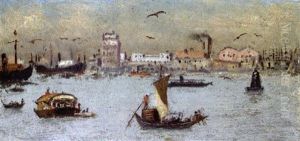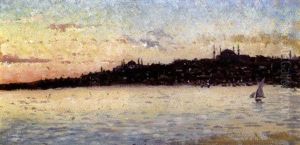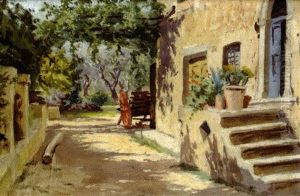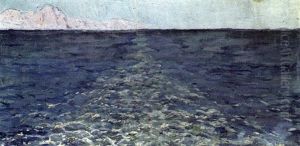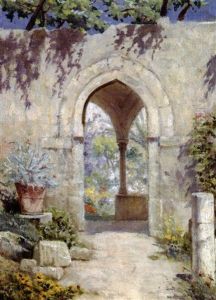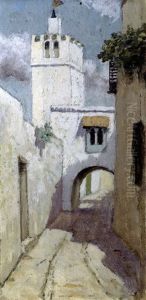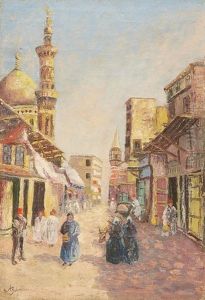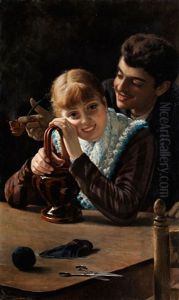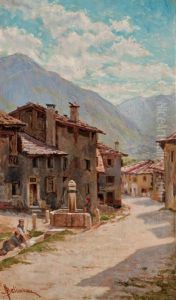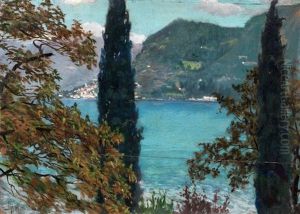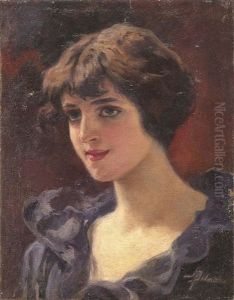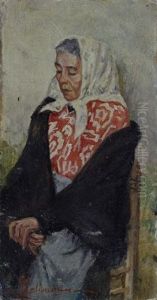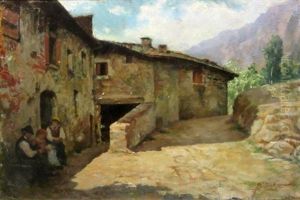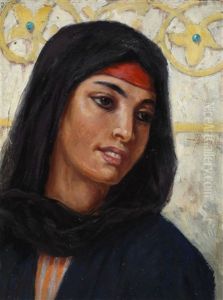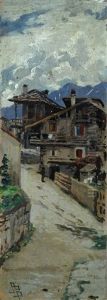Adolfo Belimbau Paintings
Adolfo Belimbau was an Italian painter born in Florence, on August 13, 1845. His artistic journey began under the guidance of Italian painter Antonio Ciseri. Belimbau's style was greatly influenced by the Macchiaioli group, although he was not formally part of this movement. The Macchiaioli were Italian painters who gathered in the mid-19th century in Tuscany to paint landscapes and everyday life with a focus on the 'macchia' or the patch, which denotes their emphasis on light and shadow and the impression of the moment.
Belimbau's oeuvre mainly consisted of genre scenes, landscapes, and portraits. His works are characterized by their detailed realism and often depict scenes of bourgeois life, capturing the elegance and leisure of his period. He had a penchant for painting women in domestic and bucolic settings, infusing his scenes with a sense of tranquility and harmony.
Throughout his career, Belimbau participated in various exhibitions, including the National Exhibition in Milan in 1881 and the Promotrice Fiorentina exhibitions, where he received critical acclaim. His paintings were appreciated for their narrative quality and the delicate treatment of light, which he used to highlight textures and create atmospheric effects.
Belimbau lived through significant periods of change in Italy, from the Risorgimento, the unification of Italy, to the early 20th century. Despite the shifts in artistic trends during his lifetime, he maintained his classic style, which was rooted in the 19th-century tradition. Adolfo Belimbau passed away on December 24, 1938, in Florence. His works remain in private collections and museums, continuing to be celebrated for their elegance and portrayal of 19th-century Italian life.
